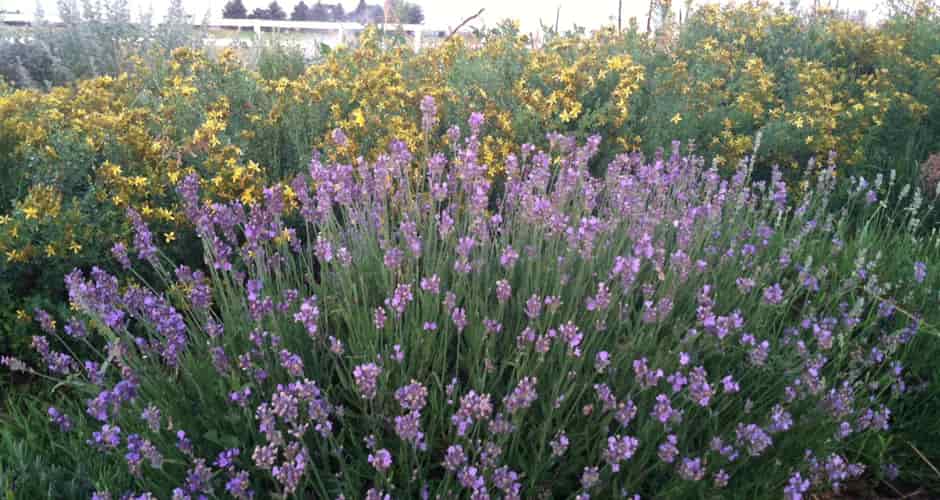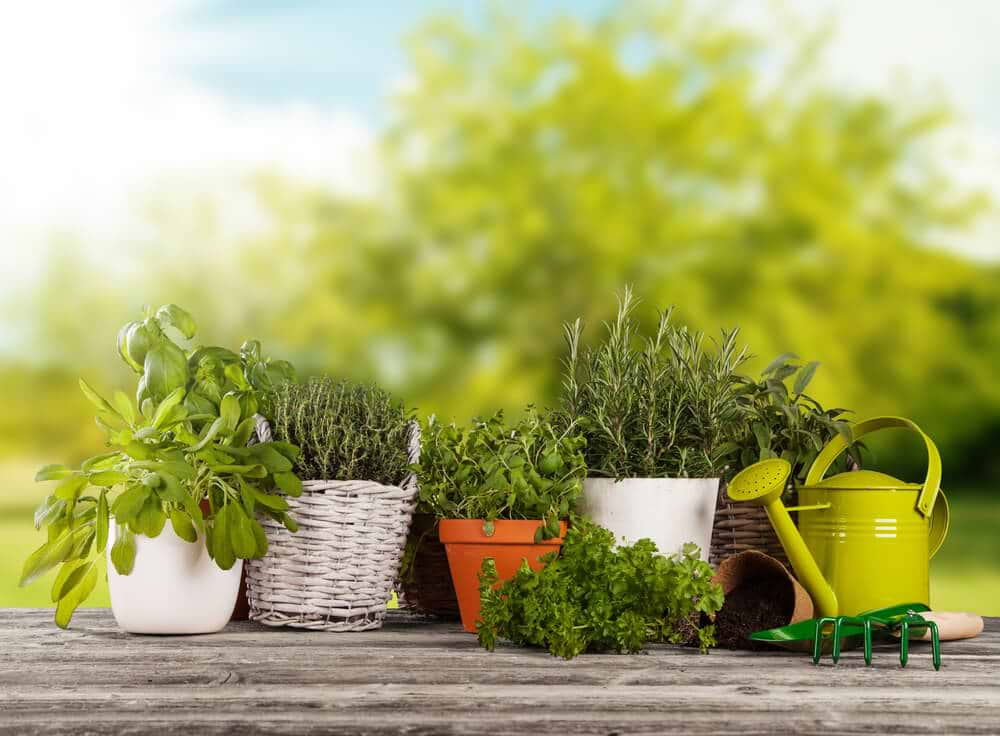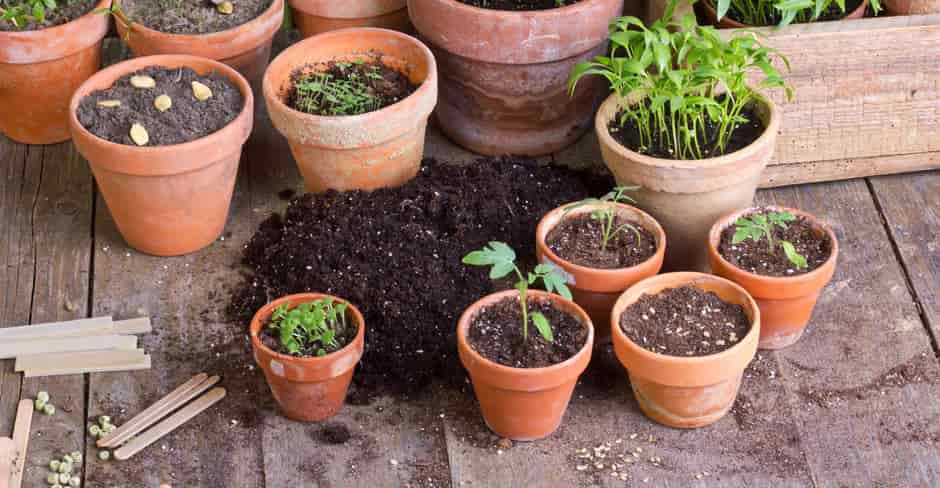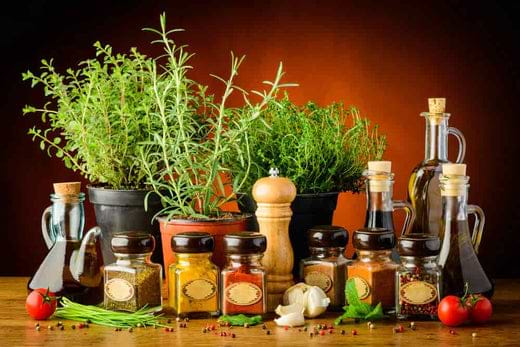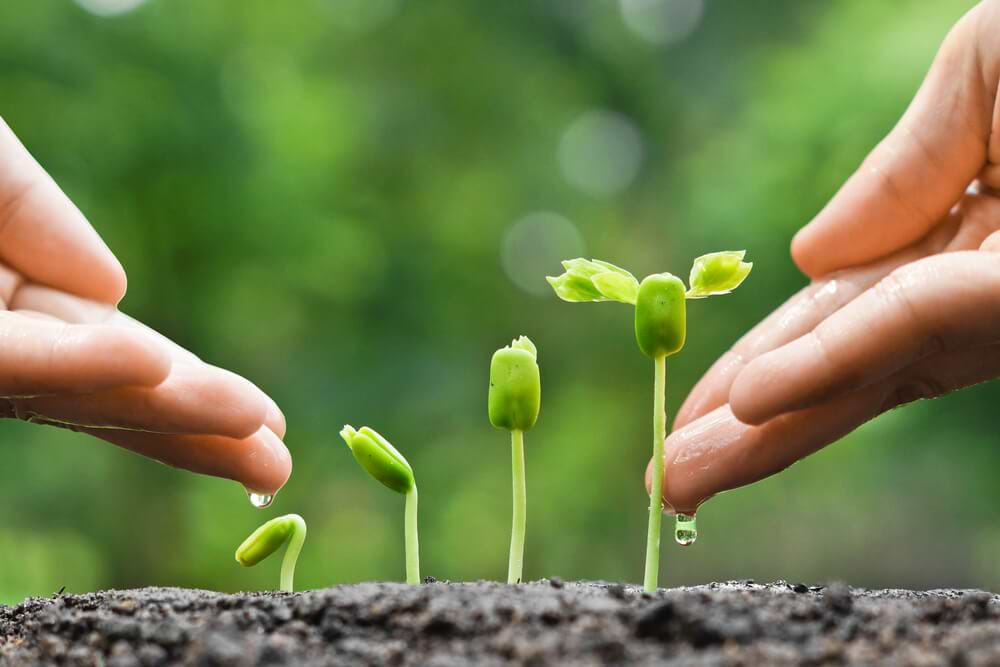It's an exciting moment when you spot tiny green shoots popping up in your seedbed. But you are not the only one who is delighted to see your new seedlings — birds, squirrels, slugs and a whole host of other garden inhabitants all enjoy a freshly sprouting snack and they can work their way through entire rows in no time.
Whilst all these creatures are an important part of a garden's ecosystem, we gardeners are understandably reluctant to share, so it is important to give your seedlings some protection until they are big enough to fend for themselves. Creating a physical barrier around your little plants deters birds, squirrels, raccoons and other larger creatures from destroying your future crop.
If you have sown into a dedicated herb bed, the easiest way to protect young plants is to create a cover using fine bird netting or mesh which allows water and sunlight in but keeps birds and most mammals out. To avoid damaging delicate new growth, many gardeners create a structure using poly tubing to make a series of arches over the bed, which is then covered with netting or mesh firmly pinned to the ground with landscape staples or weighted with rocks. Supplies can be found at your local garden center.
Smaller garden beasts such as slugs, snails and woodlice can creep under a cover. Outsmart them by remembering that they feed mostly at night and are attracted to damp places. Watering your plants in the morning allows the soil to dry out by the time they emerge at dusk. Scattering a thick layer of crushed, dried eggshells or sharp grit around the seedlings deters slugs and snails as they hate to slide their soft bodies over sharp surfaces.
If you have planted just a few seeds or they are interspersed in an established garden bed, you can cheaply and easily make protective cloches from used plastic bottles. Remove the lid and any labels and cut off the bottom inch or so then gently push the bottle into the soil around the seedlings to a depth of 1"-2". This technique also helps protect against wind, fluctuating spring temperatures and creates a warm, humid environment to encourage growth. If you're feeling extravagant and would like something more pleasing to the eye, beautiful bell-shaped glass cloches are available online.
However you protect your seedlings, remember to keep the soil moist as they grow. Infrequent watering can disrupt growth or even kill seedlings. In dry periods it is best to water each morning using the rain spray fitted on your watering can. A drip system is even better and will guarantee that your plants get consistent watering as they grow.
Losing a few seedlings is inevitable — that's nature. But providing a little protection now should ensure that you still have plenty of plants to grow, harvest and enjoy in the months ahead.
Writer Paula Grainger is a highly regarded British Medical Herbalist. After graduating with first class honors from The University Of Westminster, she created Lemon Balm, a popular Herbal Apothecary and Clinic in London's Camden Town. She has worked with people of all ages using herbs to enhance their health and wellness and has a wealth of experience in communicating the power of plants through her workshops and writing. In 2011 she moved with her husband (the novelist Michael Marshall Smith) and their young son to Santa Cruz, California where, when she is not growing herbs or making herbal preparations, she continues to share her love and expertise of plant medicine with people on both sides of the Atlantic. Her first book INFUSE (co-written with Karen Sullivan) will be published in Spring 2016.
For educational purposes only. This information has not been evaluated by the Food and Drug Administration. This information is not intended to diagnose, treat, cure, or prevent any disease, or to sell any product.
Recommended Products
Further Reading
